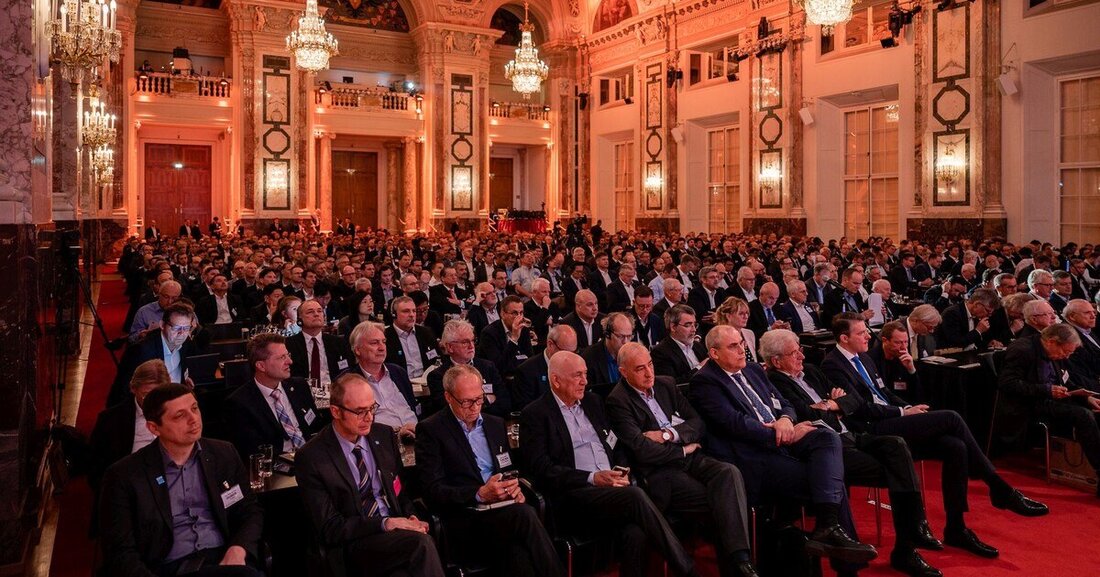Save the climate with e-fuels
Alternatives to electromobility were presented at the Vienna Motor Symposium.

Save the climate with e-fuels
Electromobility is taking hold more slowly than expected. Conclusion: In 2030, around 75 percent of the 350 million cars in the EU will continue to use fossil fuels. Even in Austria, where according to the federal government's mobility master plan only new emission-free cars will be allowed to be registered from 2030, a large proportion of existing vehicles will still run on petrol or diesel at this point and will therefore continue to emit a lot of CO2. Mats Hultman from Neste, the world's largest producer of renewable diesel fuel and sustainable kerosene, showed at the symposium how CO2 pollution could be drastically reduced. For years, Neste has been producing “biodiesel” on a large scale from waste oils, for example, which reduces the vehicle's CO2 emissions by up to 90 percent and thus reaches the level of an electric car based on the EU electricity mix - if energy production is taken into account. The fuel made from hydrogenated vegetable oil can be added to fossil diesel or replace it completely - without the need for new tank infrastructure or new engines.
However, it is uncertain whether this approach has a chance in the EU. When it comes to emissions, EU legislation only focuses on exhaust gases from the exhaust and excludes energy production. This means that electricity is always considered emission-free, even if it is generated with coal and an electric car therefore produces more CO2 than a diesel car. If the new Euro 7 emissions standard planned for the coming years and other guidelines as part of the Green Deal make the combustion engine practically impossible, according to Hultman, some of the best solutions in the EU would be prevented. The energy source is crucial for the climate and not the drive for which it is used. The climate goals can only be achieved with the necessary speed with a combination of all available solutions and, in addition to electricity, this also includes hydrogen, biogas, renewable and synthetic fuels, the so-called e-fuels.
The simplest form of e-fuels is green hydrogen, which is produced using green electricity from water via electrolysis. It can be further processed into liquid fuels such as e-methanol, e-petrol, e-diesel or even e-kerosene by adding carbon from CO2, which is split off either from the air or from industrial exhaust gases. CO2 separation and recycling are essential to create the necessary climate-neutral carbon cycle, emphasized Robert Schlögl from the Max Planck Institute for Chemical Energy Conversion in Mühlheim an der Ruhr. But e-fuels have a worse energy balance than green electricity, which directly powers a battery-electric car. Nevertheless, Schlögl sees no problem in the higher energy consumption for the production of e-fuels: “If only 0.5 percent of the land surface is covered with PV systems, the problem is solved.”
As far as costs before taxes are concerned, with today's vehicle technologies, e-fuels would be the cheapest way to drive CO2-free in 2050, Ulrich Kramer from Ford referred to the comprehensive fuel study 4 by the German Research Association for Combustion Engines. V. (FVV). Unlike batteries, they do not lose any energy even over a long storage period, said Martin Härtl from the Technical University of Munich. These advantages are all the more important because, according to Schlögl, the EU will continue to have to import a large part of its energy from distant regions of the world. Unlike crude oil or natural gas, green electricity cannot be transported in ships or pipelines. According to Jürgen Rechberger from AVL in Graz, green energy storage such as hydrogen and e-fuels are also necessary “to close supply gaps in the renewable electricity network”, for example in winter when the sun rarely shines. An AVL pilot plant for the production of e-fuels is currently being built in Graz.
Porsche and its partners are currently building a pilot plant for e-fuels in Chile, which will go into operation in 2022 and series production will begin in 2025. The planned production volume per year is 55 million liters of e-petrol, and two years later this amount is to be increased tenfold. Porsche wants to produce e-methanol, e-petrol and later also e-kerosene there. For Hinrich Helms from the Ifeu research institute in Heidelberg, e-fuel production only makes sense where green electricity is available in abundance, such as in Chile or North Africa, but not in Europe, as long as electricity is generated here using fossil energy. In regions like Chile, experts estimate the production costs to be around one euro per kilo of green hydrogen as a basic e-fuel. In Central Europe, however, the production costs per kilo are now estimated at around four euros - depending on the local electricity price.
However, many experts doubt that e-fuels will be available in sufficient quantities quickly enough to make a greater contribution to the energy transition in the passenger car sector. They would be needed more in aviation and shipping. For Helms von Ifeu, the necessary quantities are simply underestimated. In addition, large investors are reluctant to spend the billions necessary to produce e-fuels as long as EU lawmakers do not recognize them as a contribution to climate change. For Karsten Wilbrand from Shell, EU legislators lack “technology openness”. However, this is considered essential in order to implement the desired energy transition in mobility quickly enough to at least come close to the set climate goals.

 Suche
Suche
 Mein Konto
Mein Konto